I am very late with my report about Hanoi. My camera was out of order and it was not possible to download the pictures to my computer. Nevertheless . . . have fun.
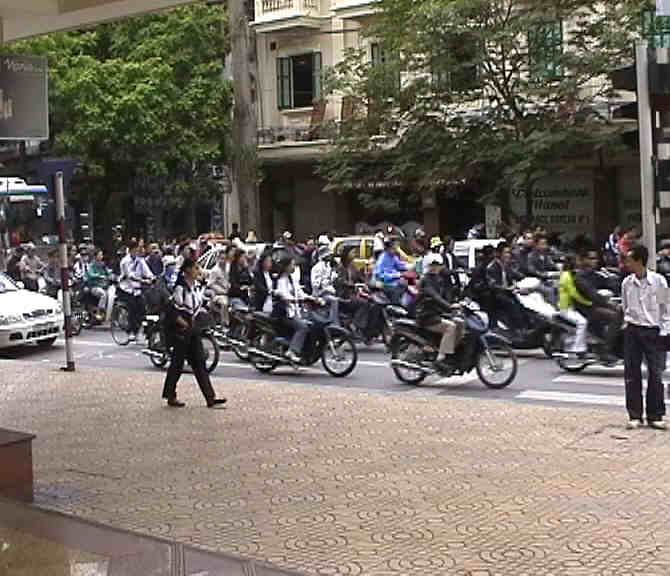 | Hanoi, the capital, with around 3.5 million inhabitants, presents itself to each visitor with a different point of view. The first thing which strikes anyone is the city traffic.
Imagine the following: Take a modern western city with all its cars and replace them with motorbikes. Increase that quantity by double and replace the motorbikes of a modern western city with cars. This will give you some impression of what is really happening on Hanoi's streets. | 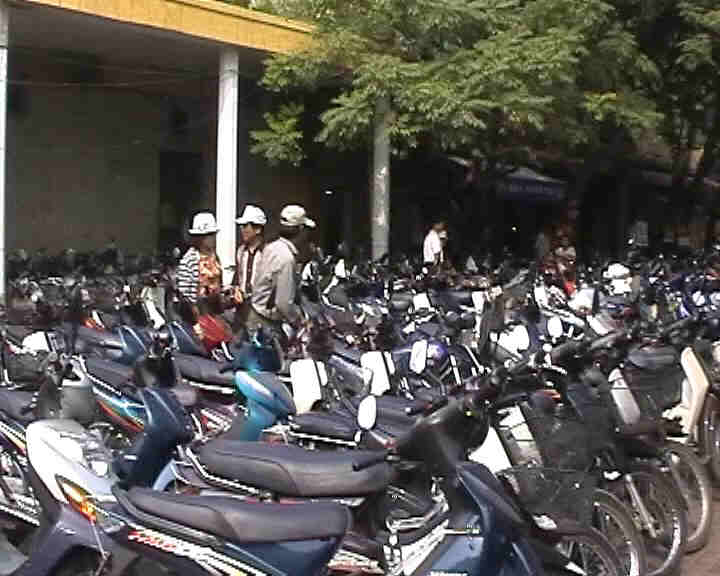 |
This huge amount of traffic makes almost all road users adopt strange and individual road manners. I always travelled by taxi in Vietnam and I always prefered to look out through the side window instead of the front window. A good example is the left-hand turn. Instead of turning left in the normal fashion i.e., waiting until there is a gap in the traffic and then proceeding with the turn and continuing on the correct (right-hand) side of the road. Instead the driver just takes a hard left and negotiates his way through the oncoming traffic on the wrong side of the road. After a few hundred meters of this madness he eventually tries to get into the right-hand (correct) lane. For the inexperienced "Hanoi traveller" this presents a "hot feeling" as the oncoming traffic races directly at him. Of course all this takes place with the ceaseless sounding of car horns (and the need to change one's trousers very urgently).
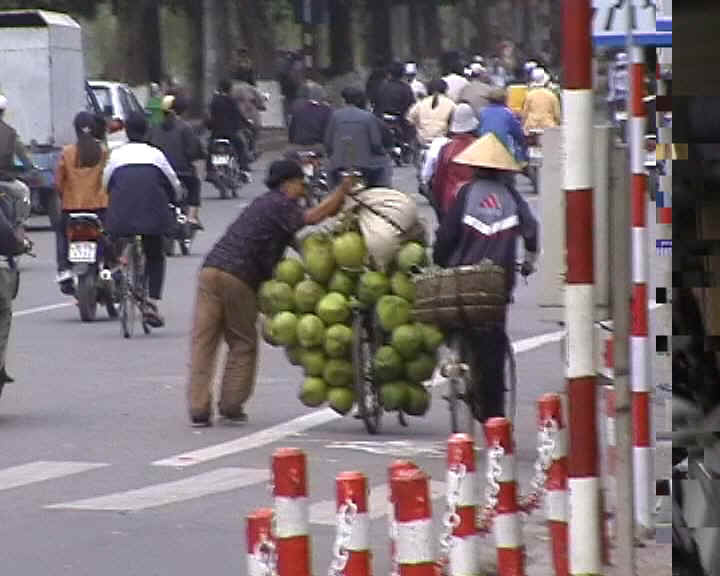 | Especially worth mentioning are long-distance trips. I travelled from Hanoi to Vienh. A distance of around 300 km. The road to Vienh is not much better than an average road between two small villages but the traffic is the same as on the Autobahn 7 on Friday afternoon. Absolutely terrible. Here also, the strange traffic measures are applicable. An overtake with slow speed by oncoming traffic or right overtaking belong to the normality. A 180 degree turn in the middle of moving traffic seems to give the Vietnamese a special kick. Vietnam is an agricultural country and so cattle, sheep and fowl are a daily occurrance on the street. Very interesting . . . especially in a fast moving car. The motorbike is not only an expedient means of travelling, it is also a cheap method of transporting different things. I must not forget to mention the animal transportation. A wire-cage was mounted on the carrier of a motorbike. The contents? Two fully-grown pigs. A wooden board was fixed above the front wheel and here also a fully-grown pig was buckled on. The pigs showed their annoyance with non-stop penetrating squeals. |
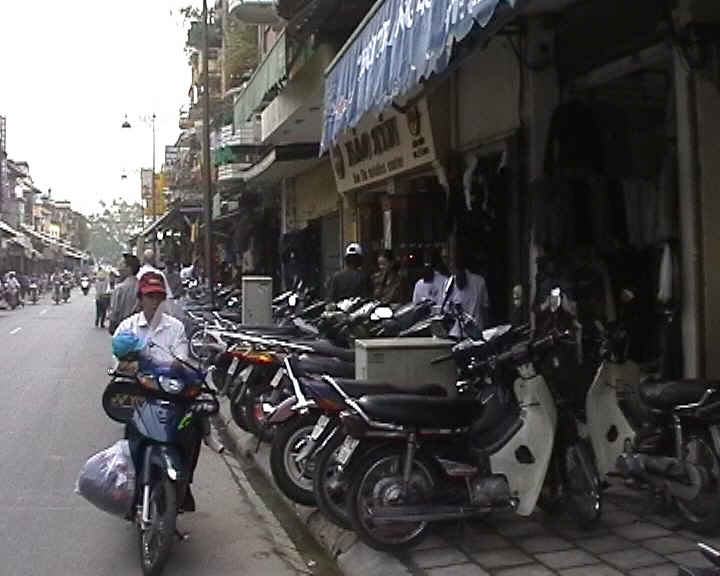 | Another problem is finding a parking space. The uncountable number of motorbikes are simply parked on the sidewalks. Otherwise the streets are blocked. This means that the pedestrians must mostly use the street. One is especially funny. The merchants have used the side walk for the presentation of their goods for several years with the same result for the pedestrians . The city council has forbidden this: "The pedestrians can't walk on the street." Result: The motorbike riders took this to be a welcome invitation. The pedestrians are still on the street.
Motorbikes can't be registered in Hanoi since some time ago. The quantity of registered motorbikes simply became too large. I wonder where all the new motorbikes came from. It's a miracle. |
Hanoi is not only surprising with its heavy traffic. Its architecture is also a revealation. The long-standing French colonial control strongly influenced the architecture. New buildings are also in the French style. Tower blocks or so called glass towers cannot be found in Hanoi. The municipality has endeavoured to keep the old buildings in good shape though not very successfully. It is taking place a "little bit" slower than desired. |
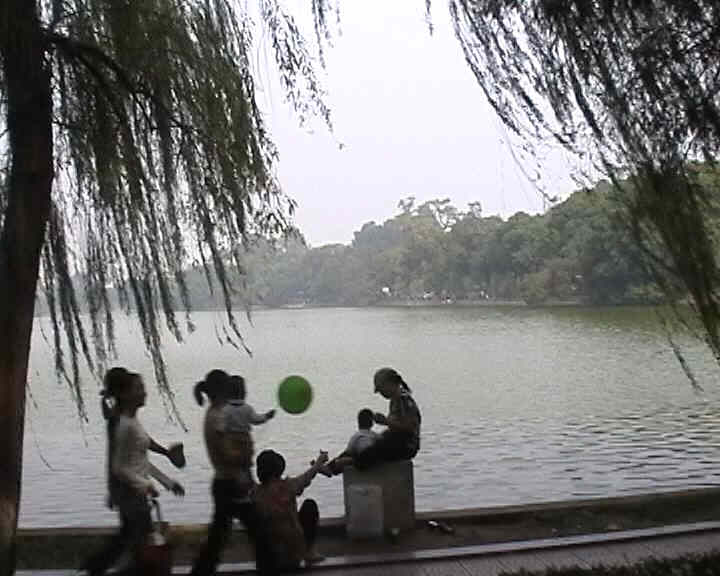 | There are several lakes in and around Hanoi. The Bay Mau Lake and the Thien Quang Lake within the Lenin-Park as well as the Hoan Kiem Lake (Lake of the returned sword) deserve a mention. The Hoan Kiem Lake seems to be the most attractive one. A Daoist temple is located on an island in the lake (Ngoc Son = jade-hill island). Some especially beautiful carved figures are preserved there. A stuffed giant-turtle is displayed in an extension of the temple. Pictures and descriptions would have us believe that this kind of turtle is still living in the lake. I find this hard to believe. | 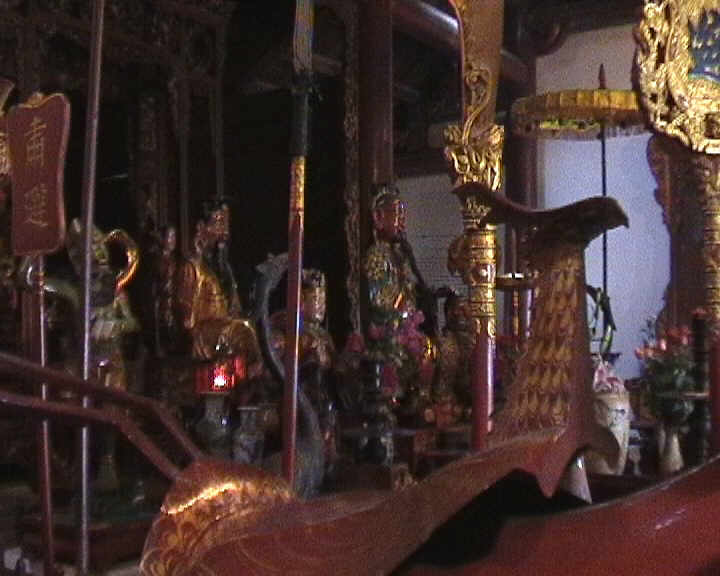 | |
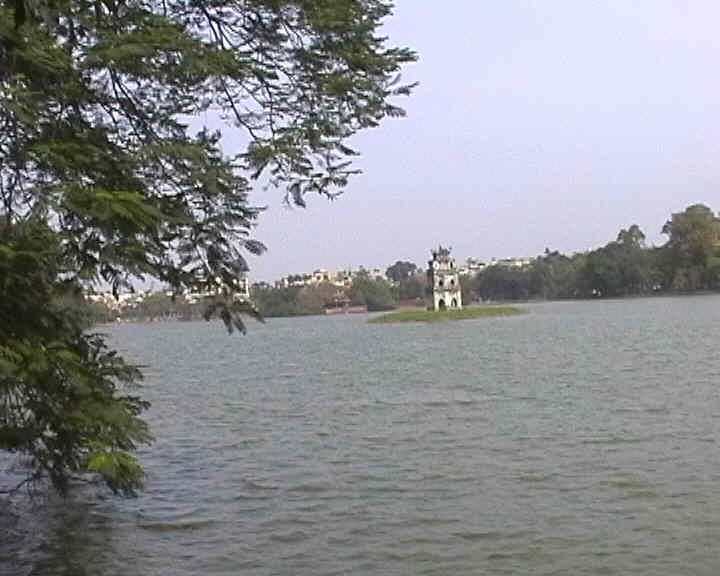 | The legend which gave the lake its name is as follows: The big landowner Le Loi fought a 10 year long war against the Chinese Ming Dynasty at the beginning of the 15th century. After Le Loi prayed for divine help for himself and his troups in a threatening situation, a golden turtle appeared right in the middle of the lake. The turtle gave him a sword with which he could defeat the enemy troops. | 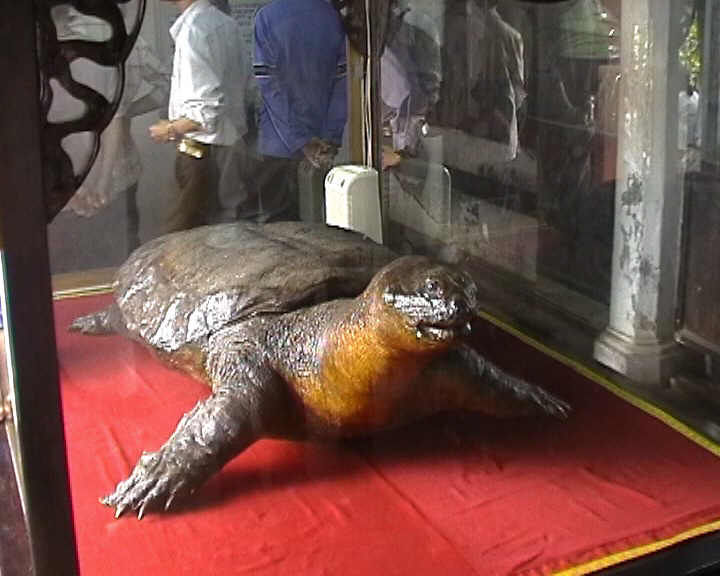 |
The turtle appeared once again during the victory celebration and demanded the return of the magic sword . The sword slid out of the sheath by itself before Le Loi, who was by now called King Le Thai To could respond and flew into the mouth of the turtle. The turtle then disappeared into the water. A tower was built in honour of the turtle (Thap Rua = Turtle tower) at the end of the 16th century. It is located on a small island in the south of the lake.
Another sight worth seeing is the Army Museum. Many exhibits from the so-called Vietnam-Wars (1946 - 1975) are an indication of the insanity. Of special attention is the "American Phase" (1960 - 1975). A rapprochement between Vietnam and America has taken place in recent years. It is now so advanced that in the mean time, American holidays such as "Independence day" or "Thanksgiving" have taken over. The US Dollar has now become the second currency in Vietnam.
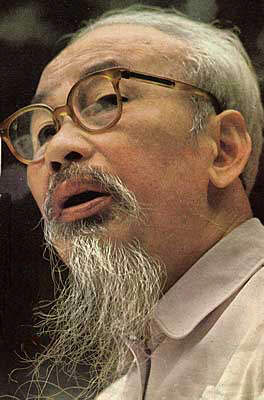 | The name Ho Chi Minh is closely connected with the history of Vietnam. Many people still remember the war cry "Ho, Ho, Ho Chi Minh" from the student days of the 60's. He proclaimed himself as leader of the independence movement of the Democratic Republic of Vietnam on September 2, 1945 after the capitulation and the retreat of the Japanese occupiers. At the place where he climbed up on the platform, a mausoleum was built between 1973 and 1975. Tourists must give up their "summer uniform" when visiting this revered place. Only those who wear tasteful clothes and keep to the strict rules of behaviour will be allowed into the burial chamber with the glass coffin by the guard of honour. Ho Chi Minh died on September 3, 1969 at the age of 79 years. | 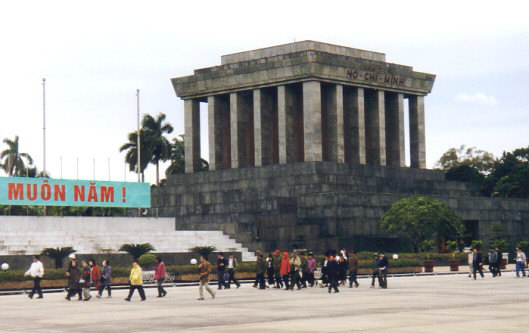 |
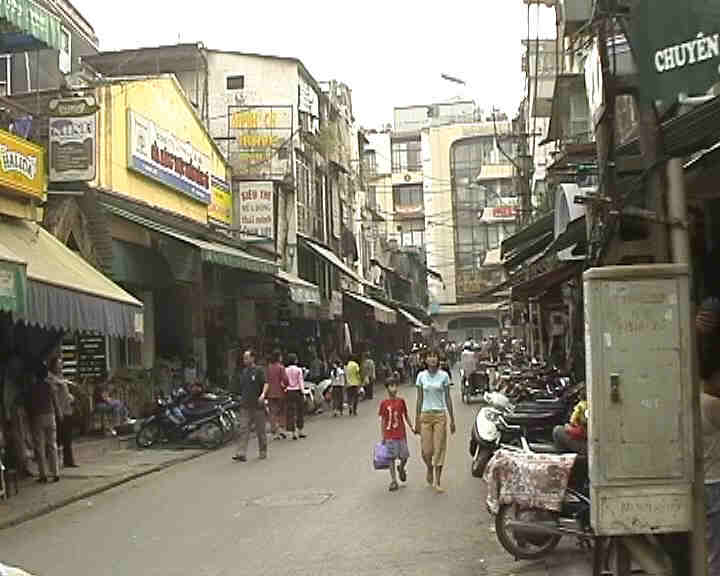 | The old town of Hanoi is especially exciting. Not only are the narrow streets and alleys unsuitable for trucks and motorbikes but also too many people are crowded into the smallest space - in houses as well as in streets with thousands of shops and workshops.
The old town is the home of the manual workers who have moved there from their villages over many hundreds of years. So, as each village specialised in a craft or trade, so the new inhabitants organised themselves into strict guilds. They lived in quarters which are named in reference to their occupation. The quarters were divided by ramparts and walls. The ramparts and walls were torn down later as more and more people settled down in this area. Today the inhabitants of the old town still call it "Town of the 36 Streets and Districts". | 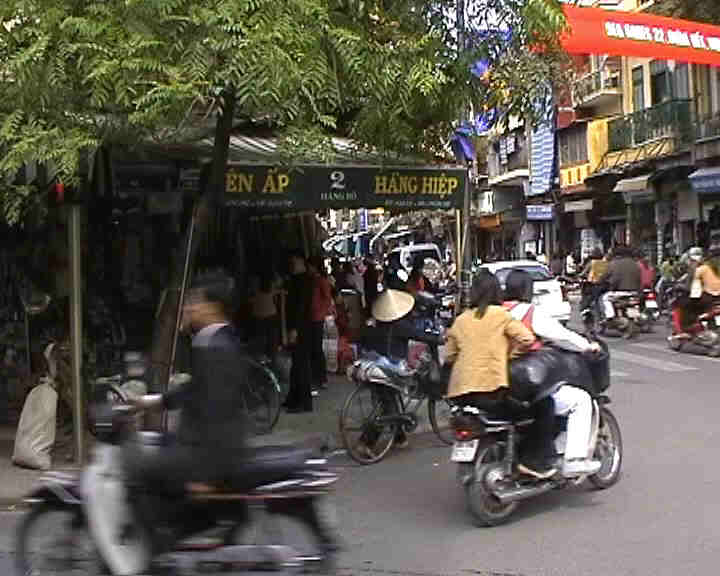
|
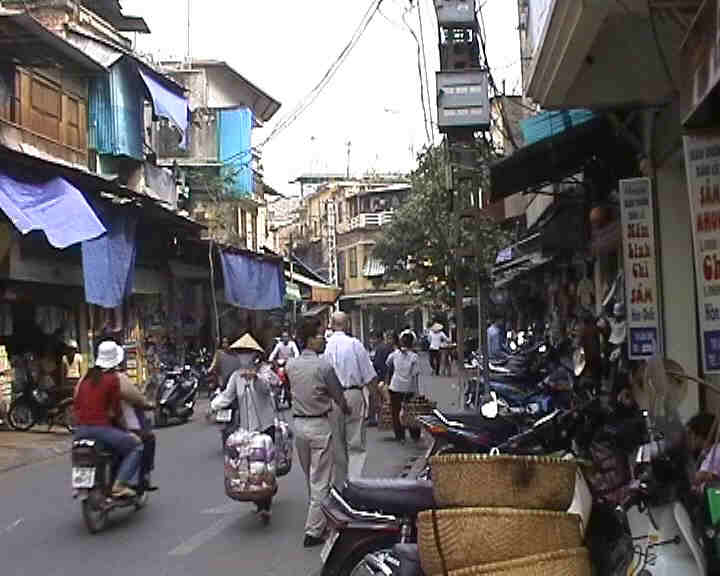 | The 36 street names, which specified which goods (Hang) were sold house by house, are retained. From the Hat Alley (Hang Non) you can turn off into the Tin Alley (Hang Thiec) or the Pipe Alley (Hang Dieu). Beans could be bought in the Hang Dau, fish in the Hanf Ca, noodles in the Hang Bun and rice in the Hang Gao. All the members of the guilds required a shop and so each got only a street front of approx. 4 or 5 meters. Because of this all houses have a depth of 60 to 80 meters. One room is directly connected to another room.
Most buildings date back to the late 19th century and that points to the central problem of the Hanoi old-town. The hygienic conditions in the overcrowded and partially ruined buildings are catastrophic. A redevelopment would be extremely expensive, lengthy and troublesome. Nobody knows what will become of the old town. |
Cleanliness and hygiene are a huge problem in Vietnam. Hanoi itself is just bearable. The areas outside the city are much worse. I don't want to put the complete blame on the government. Sure, it has neglected many areas in this case regard but the cleanliness must ultimately come from the people themselves. We visited a few of the street kitchens while on my trip to Vienh. Restaurants as we know them don't exist outside of the big cities. I have never seen such an accumulation of filth. Chairs which were white originally are covered with a thick crust of dirt. Glasses which we should use for our drinks haven't seen water for many days. The floor has seldom seen a broom or water. I don't want to mention the oven. We didn't get covers for the blanket or the pillow in a hotel where we stayed overnight. The sheet had seen multiple use. | 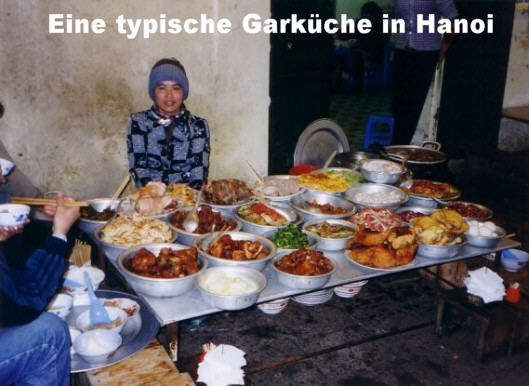 |
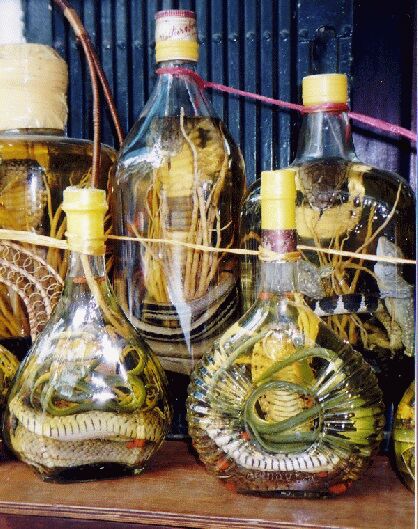 | An environmental consciousness seems not to exist in the heads of the people. A large lake within a tourist centre was glimmering in all the colours of the rainbow because of fuel oil. I even watched people throwing their garbage into the lake. I have no doubt about the hygiene of the people. I have seen nobody who neglected their bodily hygiene.
Vietnam today tries to promote tourism. Concerning cleanliness, they must do a lot more. Otherwise nobody will come.
I must not forget to mention the traditional medicines in Vietnam. The people seem to attach great importance to them. The creepy drinks and tinctures can be bought in the old town of Hanoi. Big bottles with seahorses or snakes preserved in alcohol. They also talk about preserved bear paws. You will get only one answer when you ask about the effectiveness of these "medicines": "Good for men!" Do they believe it themselves? |
|



